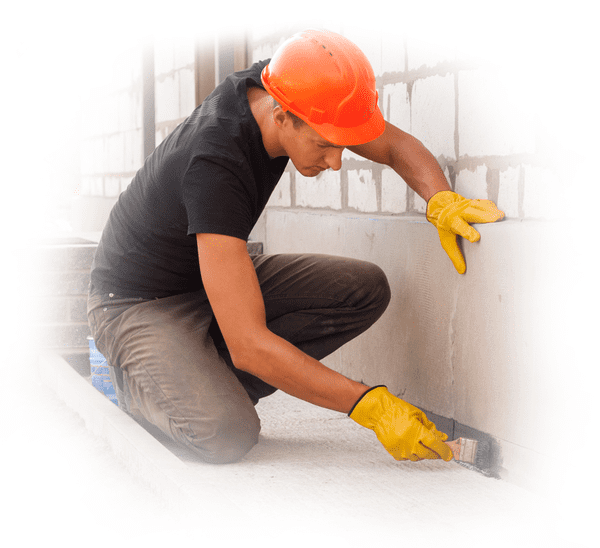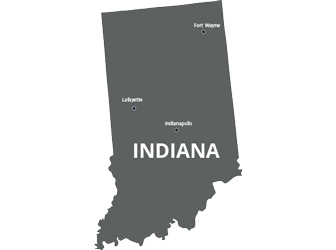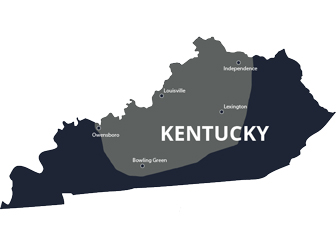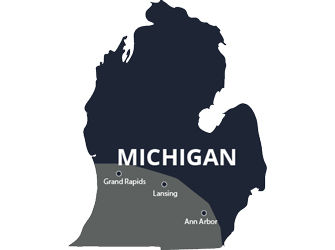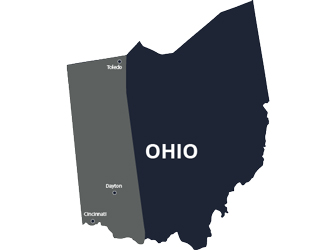Originally posted 5/1/2019, updated 11/5/21
Mold is an unwanted guest that doesn’t wait for an invitation. In fact, it’s more like an intruder or invader- it sneaks into your home, finds a place for itself, and settles in. You may not even notice it’s there for a while; since it prefers the dark, mold often takes root in a corner or out-of-the-way spot in your home.
Like many topics these days, there’s a lot of information available to us about mold. Some of this is false or misleading, some of it factual without being helpful, and some of it is produced specifically to frighten us. We’re going to focus on accurate, useful, and applicable facts.
Acculevel is a family-owned and operated company that specializes in foundation repair and waterproofing. Mold is a common problem in damp areas below grade (ground), so we have significant knowledge and experience on this topic. Since our start in 1996, we’ve helped more than 35,000 homeowners repair their basements or crawl spaces. These repairs have restored health, strength, and stability to their homes, maintaining their value and preserving them for the future.
As I promised earlier, we’re going to focus on 10 essential facts about mold. We’ll explain each item’s significance and importance to you, and provide you with additional resources and solutions to help you address the situations that may be applicable to your situation.
1. Mold is Everywhere
Mold is actually a type of fungus. There are over 200,000 species of fungi, including mold, yeast, mushrooms, and lichen. Many of them are useful or even beneficial to humans. One of the best antibiotics we have discovered is a mold called penicillin; countless lives have been improved or saved by this organism.
Sharp cheese owes its distinctive flavor to the mold that develops during the aging process. Yeast is another type of fungus that is necessary for delicious foods like bread, wine, and other fermented products. And anyone who’s ever hunted mushrooms knows how tasty those are!
Fungi aren’t plants, and there’s no way to completely eliminate them from our homes. Their spores are often so tiny they can’t be seen, and light enough to be carried through the air. They also serve an important role in our natural environment, breaking down and decomposing old organic matter.
2. Mold is a Common Allergen
A mold allergy can be immensely frustrating. It’s estimated that out of over 100,000 types of mold, only 80 or so varieties of mold are actually harmful to humans. (That’s less than one percent, at .08%.) But many of those varieties flourish in dark damp environments like a basement or crawl space, making exposure to them more common than you might hope.
According to the National Institute of Environmental Health Sciences, the most common allergy symptoms you can experience are:
- Nasal and sinus congestion
- Eye irritation
- Blurred vision
- Headaches
- Sore throat
- Chronic cough
- Skin rash
If you have asthma or a history of respiratory problems, these symptoms are likely to be more severe. Chronic exposure to an allergen leads to illnesses and infections, like bronchitis, nasal or ear infections, pneumonia, etc.
3. Mold Can Be Harmful to Anyone
You don’t have to be allergic to mold for it to harm you. Long-term exposure to mold has been shown to increase a healthy person’s risk of developing asthma. This is especially true of children, the elderly, or anyone with a weakened immune system.
Infants, since they are still developing their immune systems, are a particularly at-risk group. A study conducted by NIEHS-funded scientists shows that mold exposure during the first year of life can increase their risk of developing asthma.
Asthma is a serious medical condition that does not have a cure. Asthma can be managed through medication, altered behaviors, and avoiding triggers (items that can cause asthma attacks). Limiting or avoiding exposure to triggers is critically important. Asthma can be fatal if not treated promptly.
4. Black Mold is Not Always Toxic
As we’ve discussed, mold growing in your home is not good for you. It can cause a wide range of unpleasant symptoms and should be taken seriously.
But the media obsession about “toxic mold” (often used interchangeably with “black mold”) has caused many people to overreact to black mold while being indifferent to other colors. The strain of “black mold” that is usually being referenced is stachybotrys chartarum, and there is still no definitive proof that it causes hemorrhages or memory loss.
I’m sure at some point in your life, you’ve cleaned out your fridge or pantry and found mold growing on something past its “use by” date. Molds are naturally-occurring organisms and can be a variety of colors, shapes, patterns, or textures. The same is true of any mold that develops in your basement or crawl space.
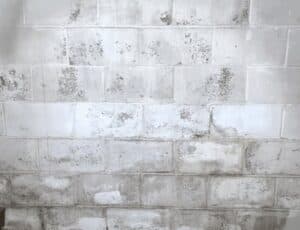
This photo was taken by an Acculevel project advisor during an in-home assessment. There is black mold growing on their damp basement wall.
5. Mold Poisoning is Rare
Again, certain publications and news sites encourage fear and panic. They’ll tell you that mold mycotoxins are deadly, and a major biological threat. This is true, but it’s not the whole truth.
Many types of mold release mycotoxins as they develop and grow. And no, these mycotoxins are not good for you (the “toxin” part of the name is an obvious giveaway). But the greatest threat of these mycotoxins isn’t direct contact with humans. Mold poisoning doesn’t happen when you breathe in a few spores while walking your dog. (Falling leaves and other natural debris on the ground are great food sources for molds.)
No, mold poisoning usually occurs when you ingest enough mycotoxins to do major harm to your body. How does this happen? There are certain molds that like to grow on crops like cereals, nuts, spices, dried fruits, apples and coffee beans. These molds are the ones that rightfully concern us, because their mycotoxins can contaminate our food sources.
You can protect yourself from these by buying fresh foods, storing them properly, and eating them within the recommended time frames.
6. Mold Has a Distinctive Smell
While mold odor is not as pervasive as skunk spray or as foul as rotten food, it is not a pleasant fragrance. Mold has a distinctive musty smell that gets stronger and more intense when the air is damp. You should treat this odor as a symptom of a moisture problem, just as you would if you saw mold growing on a surface. This is especially important if you have a crawl space instead of a basement.
If you have a crawl space, it’s likely you’ve never willingly entered it. We are not shaming you for this; there are a number of perfectly logical reasons why you haven’t. Crawl spaces often have small or awkwardly placed entrances that limit entry. When accessibility isn’t an issue, claustrophobia still can be a problem; it’s a common phobia. And even if you’re an extremely lean contortionist who likes squeezing through a laundry chute? You may still not be okay with a face-to-face encounter with mice, snakes, or spiders. And that’s okay!
But if you smell mold, have nagging allergy symptoms that only happen at home, or can see standing water in your crawl space from the entrance? You need to hire someone who will go into the space and inspect it for you.
Full disclosure: if your crawl space is less than 18 inches tall, accessibility is going to be an issue for repairs. Adult humans using tools, machinery, and other repair equipment will require a certain amount of space to function.
7. Moisture Feeds Mold
Mold doesn’t magically appear. It may seem like it, but there are certain conditions that have to be met before mold will grow. As we discussed earlier, mold spores are everywhere. They’re tiny enough to be carried into homes on our clothes or shoes, even brought in with air when we open the door.
But mold spores, like other organisms, need the opportunity to grow. They need a dark space with little to no sunlight, and they have to have a source of moisture. You’ll notice we used the word moisture, and not water. Mold doesn’t need standing water- although that will definitely do the job. Mold only needs damp air, high humidity, or a bit of condensation.
This is why you should have a dehumidifier in your basement or crawl space. A good quality whole-home dehumidifier will maintain the ideal humidity level for healthy and clean air.
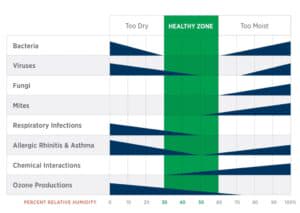
A study done by ASHRAE (American Society of Heating, Refrigerating and Air-Conditioning Engineers) demonstrated that all manner of unpleasant microorganisms thrive in extreme levels of humidity. The ideal humidity level is around 50%, which is good for humans but not for the fungi, mold, bacteria, and other organisms that can harm us.
8. Mold Can Grow on Most Surfaces
You can find mold on just about any surface, as long as it provides enough texture to allow the organism to “grip” it. But mold really likes organic surfaces like wood, drywall, and fabric. This is because it can not only spread easily across the surface, but it can break down the materials to feed itself.
Fungal organisms are an active part of the decomposition cycle in our natural environment, so this is what mold does best. It attaches itself to a material it can break down into fuel, allowing it to flourish and spread.
There are inorganic surfaces that inhibit mold growth. These materials are often used in basements and crawl spaces as liners to prevent mold from getting into the space. You may be familiar with encapsulation, which is used to cover the walls of a basement- or the walls and floor of a crawl space. In 2020, Acculevel began using a new material for encapsulation that is 100% virgin resin polyethylene, so it will not support mold or mildew growth.
9. Bleach is Not the Answer
When you see a dirty floor, or a mess to clean up, is your first impulse to get the bleach? If so, you’re not alone! I occasionally mop my kitchen tile with a diluted bleach solution. I do this because I have dogs, and they track who-know-what into my kitchen. However, I read and followed all of the precautions, and verified that it could be applied without damaging my (sealed) tile floor.
But bleach is not a cleanser. It’s a powerful chemical that has the ability to disinfect surfaces that are non-porous. Bleach is not safe to use undiluted. And bleach should never be mixed with cleansers or other chemicals; the resulting mixture can corrode or damage whatever you’re applying it to.
In fact, if you mix bleach with the wrong thing (like items that contain ammonia, vinegar, or other acidic solutions), you’ll create a toxic gas that can be fatal. No matter what DIY articles on the internet will tell you, bleach is not what you should use to clean a moldy space.
Additionally, if you are trying to physically scrape off the mold yourself? You may actually make it worse. Removing mold can release additional spores that can find a new home elsewhere in your basement or crawl space.
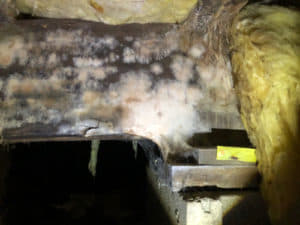
This photo was taken by an Acculevel project advisor during a home appointment. The crawl space is damp, allowing mold to flourish on the floor joists and beam.
Hire a Professional
If you have mold in your basement or crawl space, your best option is to consult a professional service. They have access to products that are designed for this situation; most of these are not available to consumers. Mold treatment is a service Acculevel provides, and we train and equip our crews with the necessary PPE (personal protective equipment) required to use those products.
FYI: we generally recommend that homeowners (and their pets) leave the home during mold remediation. While you will be far enough away from the treatment to be safe, the fumes are unpleasant and may be triggering for people with respiratory issues like allergies and asthma.
10. Prevention is the Ideal Treatment
Once mold has invaded your home, it is hard to evict. The best thing you can do is prevent its growth in the first place. You can do this by keeping your basement or crawl space dry, and controlling the humidity level.
If it’s too late for that, you should find a qualified local contractor to treat the mold and make the needed repairs and improvements to your basement or crawl space. You must eliminate the circumstances that allowed the mold to develop. If you treat the mold and ignore the source of the moisture, you’ll have mold growing again in no time.
We have detailed guides that are available -at no charge- to any homeowner who has questions about waterproofing and encapsulation. Please bookmark or download the guide you need, and refer to it whenever you have questions!
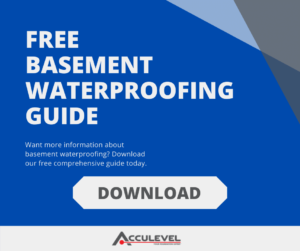 |  |
Do You Need Mold Treatment in Your Home?
Acculevel proudly serves all of Indiana and portions of Illinois, Kentucky, Michigan and Ohio. If you’re not sure if you live in our service area, you can check by using our interactive coverage map.
You can schedule an in-home consultation with one of our waterproofing experts by calling 866-669-3349, or by completing our online scheduling form. Our project advisor will meet with you (on time!), discuss your concerns, and review what you’ve seen, smelled, or experienced.
Because our goal is to provide you with a comprehensive whole-home solution, they will thoroughly evaluate your home before making any recommendations. Once this review is complete, they will work with you to determine the best course of action so that your home is safe, healthy, and strong for years to come.
If you do not live within our service area, you are still absolutely welcome to use our homeowner guides! (Though there may be variations in construction methods or options, if you are in an environment significantly different than the Midwest.) We also have a guide to questions you should ask a contractor, that you can use to help screen potential companies before hiring the right one for you.













